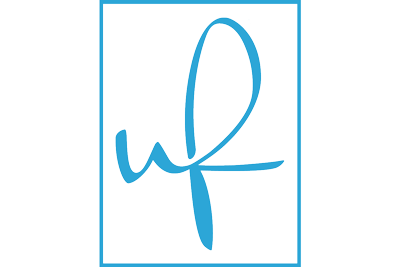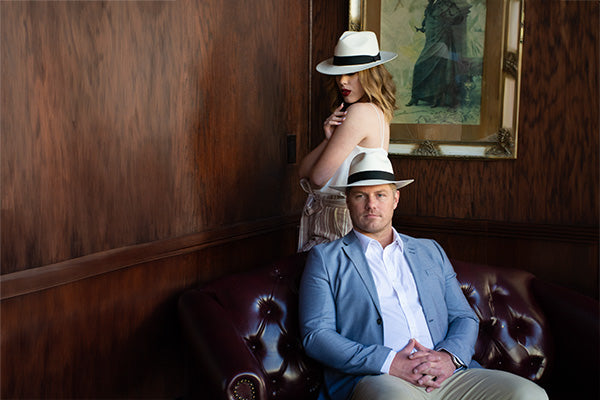FREE Shipping on all U.S. orders $200+
FREE Shipping on all U.S. orders $200+
Hat Care

The Complete Panama Hat History
May 11, 2018 5 min read
What country makes Panama hats? Where do Panama hats come from? We’ve noticed a lot of misinformation floating around the internet about the origin of Panama hats, and as a central authority in Panama hats, we would like to give you the official Panama hat story.
You’re about to learn everything you could have ever wanted to know about the origin of Panama hats. We’ll tell you things like not only what country makes Panama hats, but also which part of that country makes the very best ones, so read on!
Where Do Panama Hats Come From?
The origin of Panama hat began in the early 1500s when Spanish conquerors first observed a mystifyingly beautiful headpiece worn by the natives of Ecuador. The rich and shiny material was like nothing they had ever seen before. We now know that the hats were woven from straw, but the superstitious Spanish explorers thought that the Ecuadorians were wearing vampire skin!
What Country Makes Panama Hats?
Authentic Panama hats are made in Ecuador. Several countries make what they call Panama hats nowadays, but Ecuador was the very first. The coastal provinces of Guayas and Manabi began weaving the straw hats in 1630, and the true origin of Panama hats can be traced back to a town called Montecristi (of the Manabi region). They were most commonly called “jipijapa,” “toquilla,” or “montecristi” hats at the time (the latter two phrases are still in use today).
Despite the origin of Panama hats, the term “Panama hat” did not come until much later. So the next time someone asks “what country makes Panama hats”, or “where do Panama hats come from,” you tell them that authentic Panama hats come only from Ecuador.
The Panama Effect
Instead of asking “what country makes Panama hats,” the real question is why does Panama make Panama hats famous. The origin of Panama hats may surprise you.
At the time, there were plenty of reasons for foreigners to mistakenly conclude that the hats came from Panama instead of Ecuador. Many Americans went through Panama to get to California during the Gold Rush of the mid-1800s. Thus, Panama is where they first encountered the delightfully lightweight and stylish straw hats that would help guide them on their journey to prosperity. This wrongful assumption of the origin of Panama hats would only be reinforced many years later after Theodore Roosevelt was photographed many times wearing the attractive straw hat while inspecting the Panama Canal.
Perhaps the most definitive moment of Panama hat history occurred when Panama hats were showcased at the 1855 World Fair in Paris. At that time, nobody knew what country makes Panama hats for sure, and so this event would have been the perfect opportunity to clear up the misconception once and for all. However, nowhere was the country of Ecuador mentioned in the World Fair catalog, and so people continued to wonder what country makes Panama hats after all.
By the time that people began to realize that the hats were made in Ecuador instead of Panama, it was too late, and the name had already grown too familiar to change.
The Revolution
None of this would have been possible without Manuel Alfaro, a man who in many ways can be considered the grandfather of Panama hat history. This Spanish entrepreneur arrived in Montecristi in 1835 to make his name and fortune in Panama hat history, where his streamlined production process, coupled with business from the Gold Rush boom, ushered him in a new era of prosperity.
Soon the demand for Panama hats spread beyond visiting gold-diggers. The Ecuadorian port of Guayaquil helped facilitate the Panama hat industry throughout the 19th century. Ecuador also established its first railroad system in 1850, further boosting the trade.
With Alfaro’s success came stiff competition. Rival hat makers in the province of Azuay and other areas attempt to undercut his business with cheaper products, but their manufacturing methods were vastly inferior. At this point, the growing Panama hat industry splintered into two sectors. Cheaper Panama hats flooded the market from rival competitors while the Manabi region proudly continued to make a superior product using traditional weaving techniques and hundreds of years of experience. To this day, hats from Montecristi are considered the finest, most authentic Panama hats in existence – and rightfully so.
Once the people of Paris fell in love with this unique Ecuadorian headgear at the World Fair, London, Rome, and other countries soon followed. The rare and precious toquilla straw from Ecuador used to make the hats was not popularized until the 18th century when it was cataloged by two Spanish botanists for King Charles the IV. Until that point, it had been somewhat of a local Ecuadorian secret. Ecuador eventually authorized toquilla straw trade with Peru and Columbia, though these countries could not compete with the refined crafting techniques of Ecuador.
The Alfaro Legacy
At the age of 21, Manuel Alfaro’s son, Eloy, travels to Panama to take over his father’s hat trade. His excellent sensibilities and growing reputation would one day go on to make him the leader of Ecuador and also lead the Liberal Revolution of 1895. He guided the country into a remarkable social and economic transformation that wouldn’t have been possible if not for the wealth acquired by the origin of Panama hats.
With Eloy’s ascent to power, as the President of Ecuador came a new legacy in Panama hat history. Panama hats became the Ecuadorian fashion accessory of independence and newly-celebrated nationalism. New railroads spread the hat industry even further as the stylish hats gained more momentum.
A New Era
Panama hats continued to enjoy worldwide press and admiration throughout the turn of the next century. Fashion magazines and newspapers alike were adorned with Panama hat aficionados. Hollywood embraced the Panama hat’s many desirable qualities despite getting the origin of Panama hats wrong the entire time. The exotic hat created a dramatic silhouette that was destined for film, and its masculine image cast the perfect impression on audiences everywhere.
Where do Panama hats come from? Just take a look at these famous Panama hat wearers of the time:
- Theodore “Teddy” Roosevelt
- Orson Welles
- Humprey Bogart
- Gary Cooper
- Galo Plaza (Ecuadorian President from 1948-1952)
Soon, other countries made Panama hats from wood, wheat, and even palm trees, though their Ecuadorian counterparts continued to reign supreme, especially throughout Europe (the United States, on the other hand, did not seem to mind wearing the cheaper versions, though this rule has since changed in modern times). North America also took a keen interest in manufacturing these hats as well.
The Panamanian trend kept soaring to new heights as designer shops throughout the United States competed to sell the most exclusive Panama hats (often referred to as “finos”). Mexico, Brazil, and Cuba soon jumped into the fashion fray. By 1944, the hats were Ecuador’s number one export, beating out even their lucrative banana trade.
The Present
As you now know, the popularity of Panama hats has hardly declined (as evidenced by their continual manufacture almost everywhere). They have become an icon of timeless fashion. One country continues to make the best hats, Ecuador. And at when you purchase an Ultrafino Brand Panama hat, you are getting an authentic Ecuadorian woven hat full of hundreds of years of rich history. At Ultrafino, we truly understand what makes the origin of Panama hats so unique, so when someone asks, “where do Panama hats come from,” you tell them: Ecuador and sold by Ultrafino.
Want great tips for Panama hat fashion, maintenance, and other helpful topics? Check out our blog today!
Subscribe
Sign up to get the latest on sales, new releases and more …


